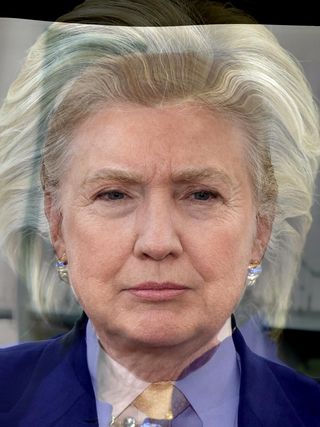Leadership
Do You Have the Face of a Leader?
Using face research to predict the success of politicians and business leaders
Posted January 3, 2016
Is it possible to infer leadership qualities from snapshots of people’s faces? To answer this we could go back to the first ever televised presidential debate between Nixon and Kennedy in 1960. According to a poll conducted then by the market firm Sindlinger & Company, those listening to the radio picked Nixon as the winner of the debate, whereas the television watchers favored Kennedy. The television viewers agreed that Kennedy was the better and more competent looking of the two candidates. In the words of Frank Stanton, the former CBS boss “Kennedy was bronzed beautifully…Nixon looked like death.” In an attempt to replicate this result, 40 years later, political scientist James Druckman let half of his students listen to the audio clip of the debate whereas the other half watched the debate on video. These results converged with the original findings. So image really does matter in who we favor as leaders.
Over the past decade there is a growing interest among leadership scholars in the utility of face research. We (Allen Grabo and myself) recently reviewed this body of research in a journal article, titled “The Many Faces of Leadership: An Evolutionary-psychology Approach.” Here follows a summary of our conclusions. In addition, we can use the face data to make some (wildly speculative) predictions on the 2016 presidential elections based on the candidates’ faces.
The evolutionary congruency hypothesis
Leadership has been such an important mechanism for group survival in our evolutionary past that humans make automatic decisions on who to follow in any particular situation. We use all kinds of cues to infer leadership potential, including physical cues. According to research, such judgments matter. Snapshot judgments of the attractiveness of politicians' faces predicts their electoral success. Furthermore, ratings of the dominance and competence of Wall Street CEO’s faces correlate with company profits.
Importantly, there is not a face for all leadership seasons. What facial cues we use to select our leaders is driven by the kinds of challenges that the group is currently facing. Hence, the ideal face of a leader in war time may look very different from the prototypical peace time leader face (just consider the example of the former British prime-minister Winston Churchill who won the war, but lost the elections after the war had ended).
So what impressions do we make of our leaders' faces? First we quickly infer dominance from faces, and the masculinity of the face is one of the best predictors of behavioral dominance. So which situations require a masculine looking leader? We find that people prefer more masculine looking leaders in war time. Think of George W. Bush (who has a more masculine face) versus John Kerry (who is more feminine looking) in the aftermath of 9/11. In further support, evidence shows that higher ranking military officers have a more masculine face than the lower ranked military.
Yet masculine faces are considered less trustworthy, and trustworthiness is an important leadership quality, especially in situations requiring cooperation and harmony. Our findings show that as a peace time leader we prefer someone with a more feminine looking face. A second facial feature that we associate with trustworthiness is a baby-face. This could explain the research finding that Black CEO’s with a baby face do better than white CEO’s with a baby face. It seems that we trust ethnic minority leaders more so when they are innocent looking.
What about competence judgments? Our research suggests that the age of a face is an important cue to competence, but age works in two different directions. When we are interested in a leader with competence in cultural traditions and religious norms – a wise leader - we prefer an older-looking leader. Yet when the group requires leadership in new knowledge domains (like clean technology) our preference shifts automatically to a younger looking leader. This leader age effect can be seen in the appointment of CEO’s. The average age of CEOs of Fortune 500 companies is 55, whereas for the Internet companies in Silicon Valley it is a little over 31.
Fourth, we make automatic judgments on the attractiveness of a face. As shown by the Kennedy v Nixon example, leaders with a more attractive face are more appealing. But why? We suggest that attractiveness may be a cue to health. We are particularly interested in choosing a healthy leader when the group is facing a physical task (like a sports competition) or a disease threat. In a study on US congressional district elections a team from Arizona State University found that attractive looking candidates received a greater share of the votes especially in districts in the US with high disease prevalences.
In sum, the face research shows that we infer all kinds of important leader attributes from a mere glance at people’s faces. Yet it remains to be seen how much this predicts actual behaviors. Do leaders with masculine faces indeed behave more aggressively? We think they do, but so far good data is lacking.
The presidential race
Finally, what does this mean for the forthcoming US presidential elections in 2016? A quick glance at the faces of the candidates shows vast differences in facial masculinity, attractiveness and age. We can blend these candidates' faces to get interesting combinations of say Clinton and Trump facial features ("the Clump" see picture below). Can we predict who will win just by looking at their faces? Here are some predictions for the 2016 rce to the White House.
In the event of a war breaking out between the US and a foreign country like Russia, China or Mexico there will be a shift towards the candidate with the more masculine face. This should favor the masculine looking Trump. Trump is also favored if there is a major terrorist strike on American soil.
Suppose 2016 will be the year that American voters are genuinely worried about gun ownership or improving the quality of race relations within the US. This means their preference will automatically shift to a feminine candidate, and this will no doubt favor Hillary.

An interest in maintaining good old American traditions and values will favor the older aged, more experienced leaders, like a Clinton, Carson or Sanders. Yet, if voters in 2016 are concerned about innovation and technology then a younger looking candidate like Rubio will prevail. Same logic may apply to Trump as he is seen as a "new kid on the block," despite his old age.
Finally, in case a highly infectious, deadly disease (like Ebola or SARS) threatening the US in 2016, this should favor a more attractive, healthy looking candidate like Marco Rubio.
Disclaimer: Of course, we should not take the science of faces at face value!
Follow me on Twitter: @markvanvugt1
Van Vugt, M., & Grabo, A. E. (2015). The many faces of leadership: An evolutionary psychology approach. Current Directions in Psychological Science.
If you want to experience the face morph process yourself, here is a link to our website with some famous faces: Trumpfaced




